ZHCSQI6C May 2022 – October 2023 TPS62870-Q1 , TPS62871-Q1 , TPS62872-Q1 , TPS62873-Q1
PRODUCTION DATA
- 1
- 1 特性
- 2 应用
- 3 说明
- 4 Revision History
- 5 说明(续)
- 6 Device Options
- 7 Pin Configuration and Functions
- 8 Specifications
-
9 Detailed Description
- 9.1 Overview
- 9.2 Functional Block Diagram
- 9.3
Feature Description
- 9.3.1 Fixed-Frequency DCS Control Topology
- 9.3.2 Forced PWM and Power Save Modes
- 9.3.3 Precise Enable
- 9.3.4 Start-Up
- 9.3.5 Switching Frequency Selection
- 9.3.6 Output Voltage Setting
- 9.3.7 Compensation (COMP)
- 9.3.8 Mode Selection and Clock Synchronization (MODE/SYNC)
- 9.3.9 Spread Spectrum Clocking (SSC)
- 9.3.10 Output Discharge
- 9.3.11 Undervoltage Lockout (UVLO)
- 9.3.12 Overvoltage Lockout (OVLO)
- 9.3.13 Overcurrent Protection
- 9.3.14 Power Good (PG)
- 9.3.15 Remote Sense
- 9.3.16 Thermal Warning and Shutdown
- 9.3.17 Stacked Operation
- 9.4 Device Functional Modes
- 9.5 Programming
- 9.6 Register Map
- 10Application and Implementation
- 11Device and Documentation Support
- 12Mechanical, Packaging, and Orderable Information
10.2.3 Application Curves

| VOUT = 0.4 V |

| VOUT = 0.5 V |

| VOUT = 0.75 V |

| VOUT = 0.875 V |

| VOUT = 1.05 V |

| IOUT = 10 A |
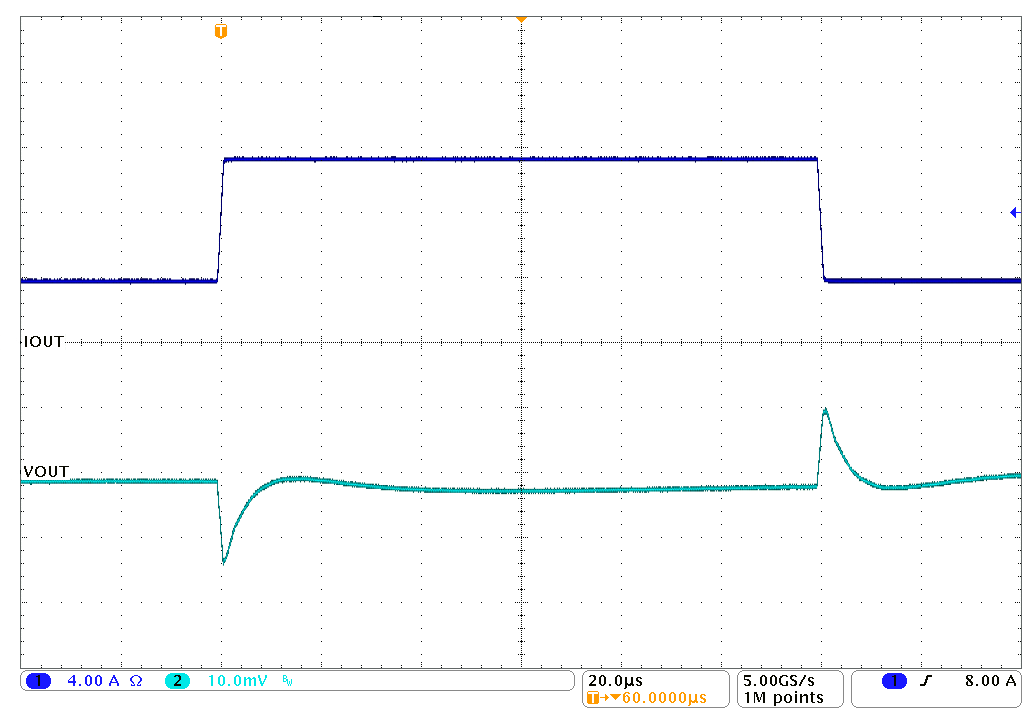
| ΔIOUT = 7.5 A | CH1 = 50 mV/A |
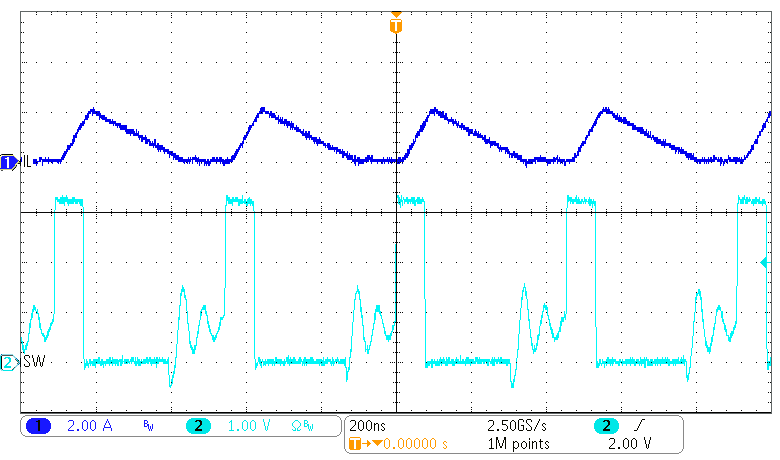
| IOUT = 750 mA |

| VOUT = 0.75 V | IOUT = 11.5A |
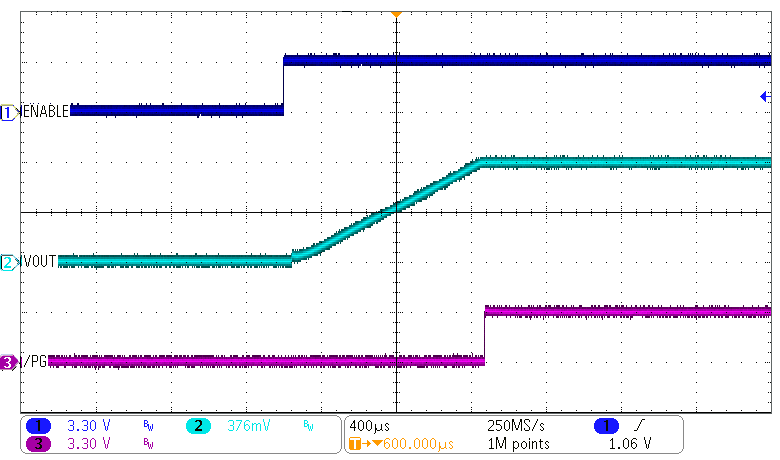
| Load = 0.75 Ω |

| Load = 7.5 Ω |

| VOUT = 0.4 V |

| VOUT = 0.5 V |

| VOUT = 0.75 V |

| VOUT = 0.875 V |

| VOUT = 1.05 V |
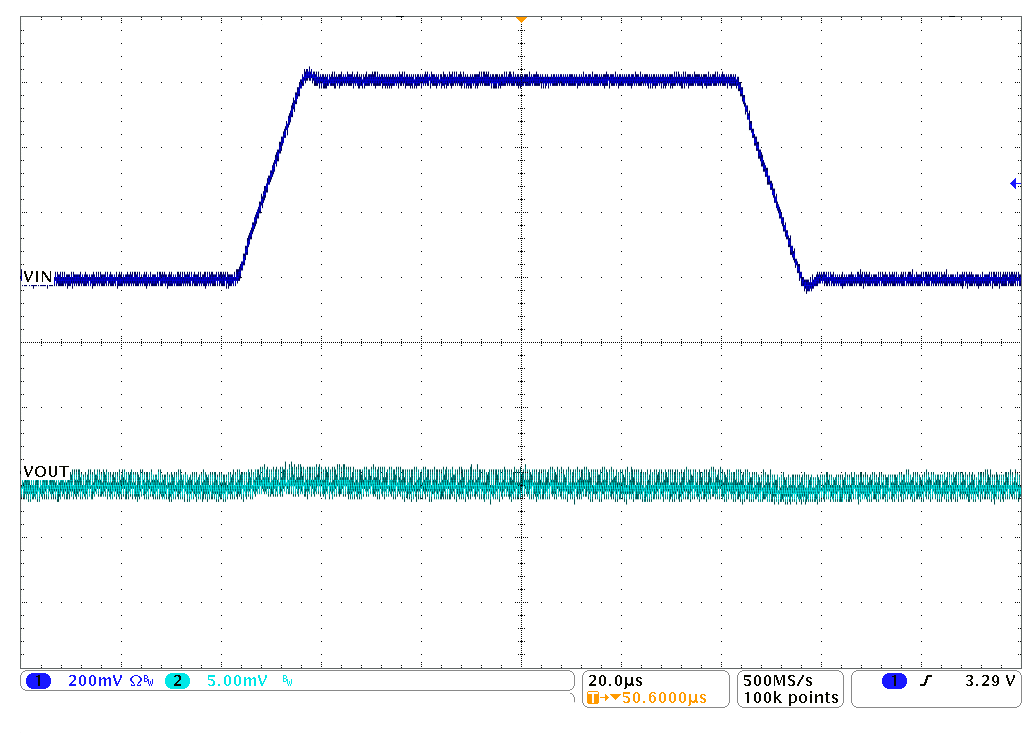 Figure 10-13 Line Transient Response
Figure 10-13 Line Transient Response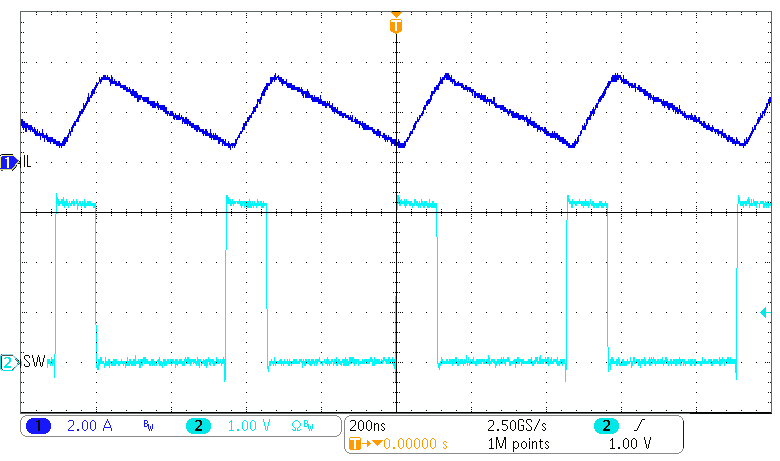
| IOUT = 2 A |
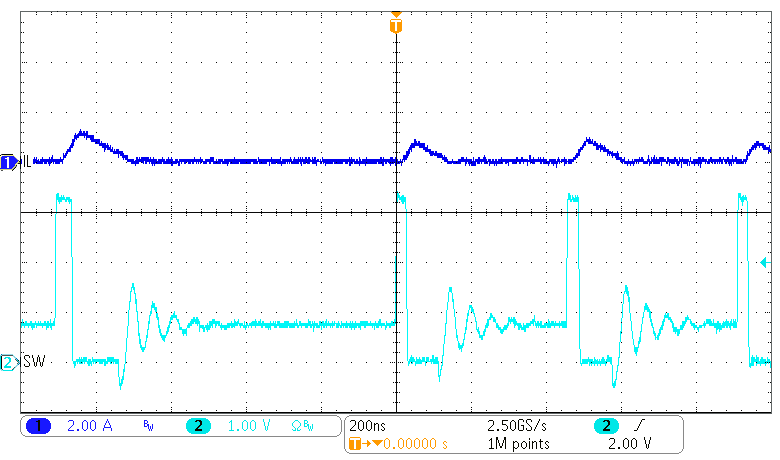
| IOUT = 75 mA |
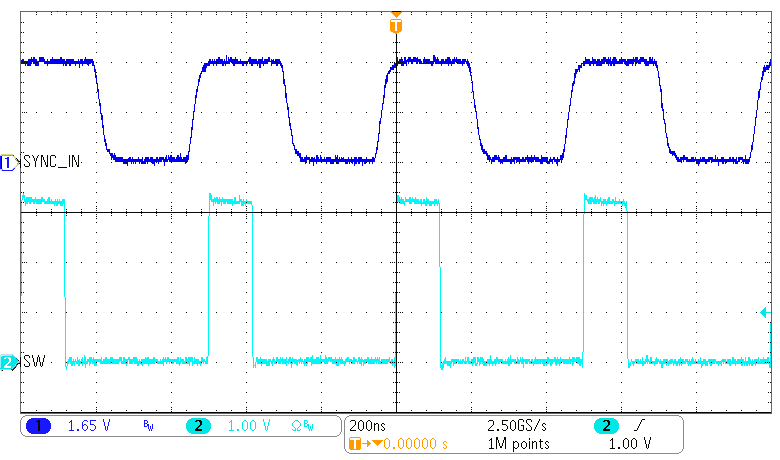
| Load = 0.75 Ω | FSEL = 2.25 MHz | f(SYNC) = 2 MHz |
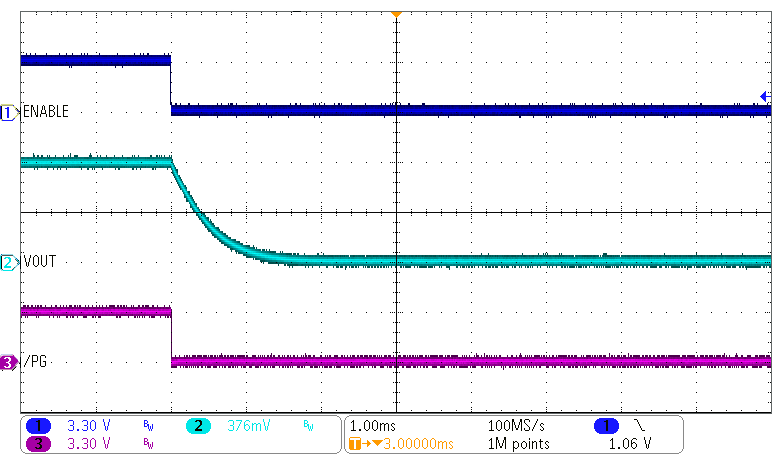
| Load = 7.5 Ω |
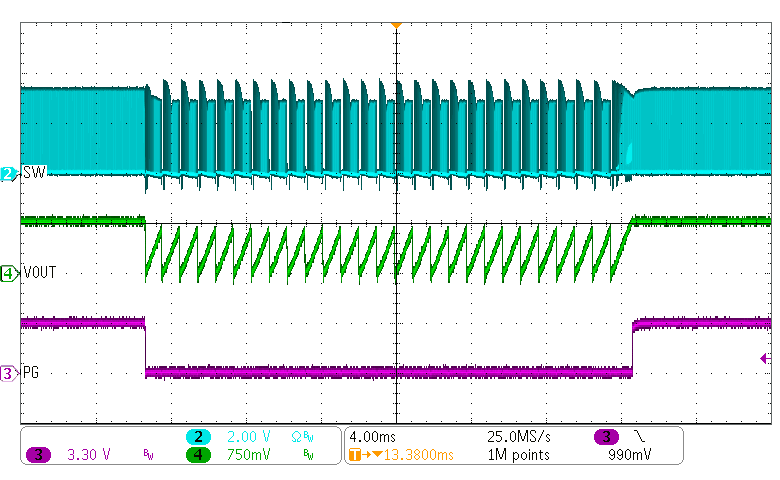 Figure 10-23 Current Limit (Hiccup)
Figure 10-23 Current Limit (Hiccup)